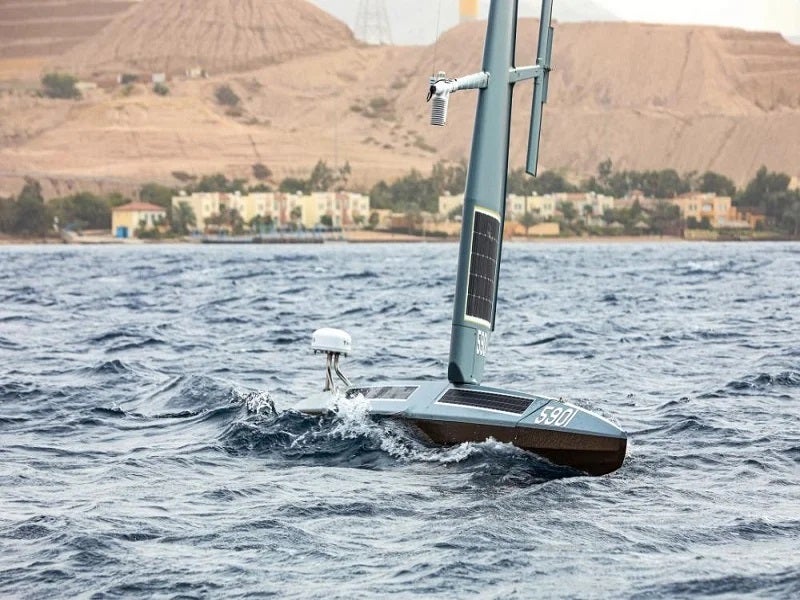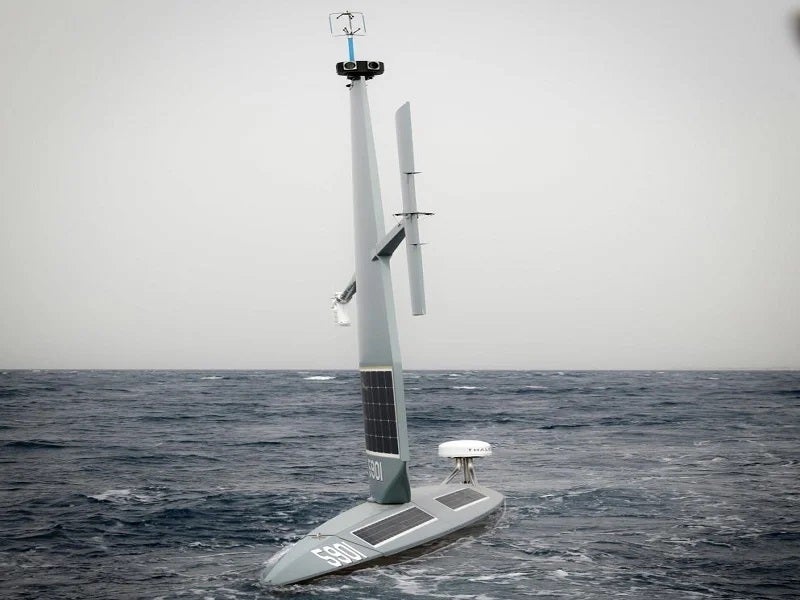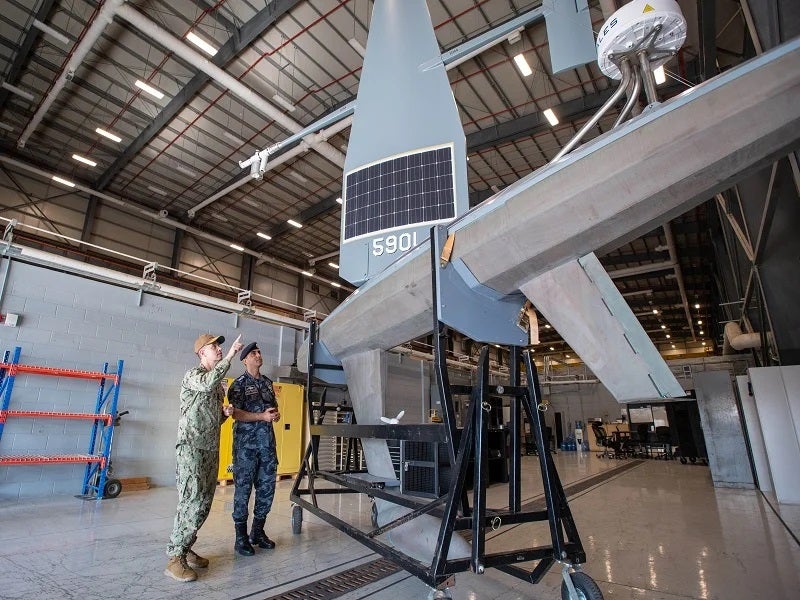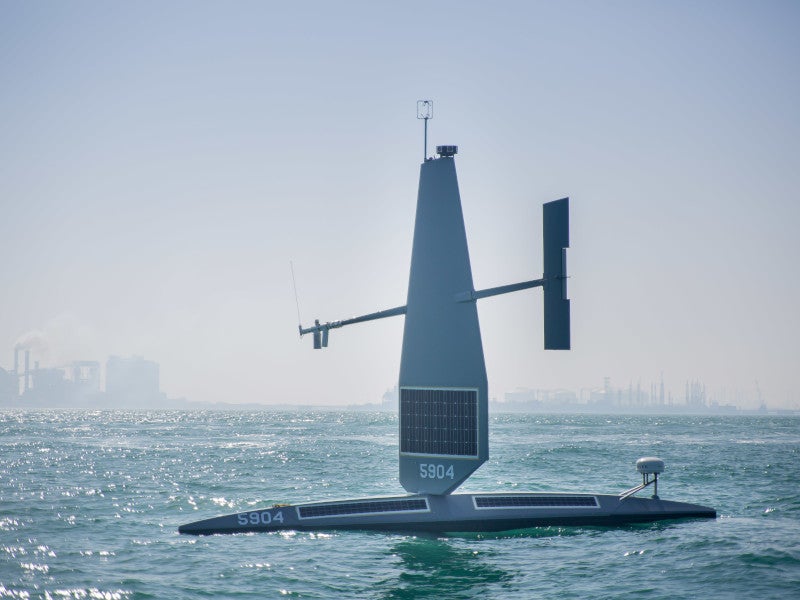The Saildrone Explorer USV is a new unmanned surface vehicle (USV) designed and developed by Saildrone, a US-based manufacturer of unmanned systems, to collect high-quality data from the oceans autonomously that can be further processed and used for a variety of applications.
The Royal Jordanian Navy and the US Naval Forces Central Command (NAVCENT) established an unmanned taskforce named Task Force 59 for the integration of unmanned systems and AI into the US 5th Fleet operations, in September 2021. The Jordanian naval base in Aqaba has been serving as a joint hub for operations of Saildrone USV in the Red Sea since December 2021.
The taskforce has since established another operational hub in Bahrain. The operational testing of the Saildrone Explorer USV was conducted during the Digital Horizon exercise held in the Gulf of Aqaba in December 2021.
In January 2023, the US Navy revealed that the USS Delbert D. Black guided-missile destroyer, along with two Saildrone Explorer USVs, took part in a three-day maritime exercise named Sentinel Shield led by the International Maritime Security Construct.
The exercise aimed to demonstrate how integrating both systems could enhance the coalition’s awareness of maritime activities, consequently bolstering security in the Middle East waters.
In February 2023, NAVCENT concluded the first-ever joint unmanned exercise with the United Arab Emirates navy in the Arabian Gulf, focusing on integrating unmanned systems and AI. Two Saildrone Explorers took part in the exercise.
Saildrone Explorer USV design and features
The Saildrone Explorer has a tall, hard wing, a longitudinal spar, and a vertical tail. The wing angle can be adjusted through a trim tab at the end of the tail to get adequate wind exposure and maintain the tall wing in position.
The rudder of the USV controls the direction of the hull while the keel maintains the position of the USV.
The Saildrone Explorer USV has a hull length of 23ft, a wing height of 15ft, and a draft of 6ft.
Navigation and autonomy
The Saildrone USV autonomously navigates through large areas of the oceans based on waypoint-to-waypoint navigation through wind and currents. It is constantly monitored by a pilot who can command and control the USV using satellite communications.
The USV features an automatic identification system transceiver, radar reflector, navigation lights, high-visibility wing colours, and four onboard cameras to enhance safety during operations at sea.
Payload options available for Saildrone Explorer
The Saildrone Explorer can carry a range of sensors, including Gill Windmaster 3D Ultrasonic anemometer for measuring wind speed and direction, Rotronic HC2 – S3 with radiation shield for measuring air temperature and humidity, Vaisala Barocap PTB210 pressure sensor for measuring barometric pressure, LI-COR LI-192SA underwater sensor for accurate measurement of photosynthetically active radiation, and Seabird SBE 37 sensor for recording salinity and temperature.
The Seabird SBE 37 ODO payload can be used for measuring dissolved oxygen, Wetlabs ECO-FL-S G4 fluorometer for Chlorophyll-a, Heitronics CT 15.10 infrared pyrometer for skin temperature, a dual GPS-aided inertial measurement unit for measuring wave height and period, and National Oceanic and Atmospheric Administration’s Pacific Marine Environmental Laboratory autonomous surface vehicle carbon dioxide to measure carbon.
The USV can be fitted with a smart camera array, which includes 360-degree high-resolution optical cameras with ML target detection for smart imaging.
In addition, the sensor suite includes options such as Teledyne RDI Workhorse acoustic Doppler current profiler for measuring ocean currents, Simrad WBT Mini echo sounder, as well as Airmar DT800 through-hull sensor and Teledyne Echotrac E20 echosounder for bathymetric data collection.







